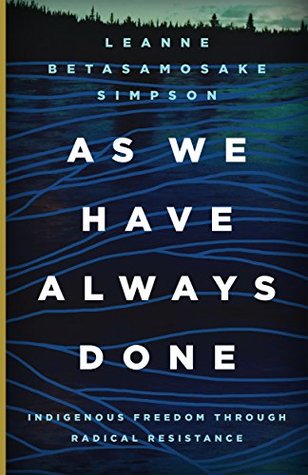More on this book
Kindle Notes & Highlights
Read between
February 4 - February 11, 2018
I began to start my own talks with a narrative of what our land used to look like as a quick glimpse, albeit a generalized one, of what was lost—not as a mourning of loss but as a way of living in an Nishnaabeg present that collapses both the past and the future and as a way of positioning myself in relation to my Ancestors and my relations. I want to do the same here in this book.
Our knowledge system, the education system, the economic system, and the political system of the Michi Saagiig Nishinaabeg were designed to promote more life. Our way of living was designed to generate life—not just human life but the life of all living things.
My Ancestors struggled, sacrificed, and fought much worse than I have to get me here, and I have the same responsibility to my future relations.
My flight to escape colonial reality was a flight into Nishnaabewin. It was a returning, in the present, to myself. It was an unfolding of a different present. It was freedom as a way of being as a constellation of relationship, freedom as world making, freedom as a practice. It was biiskabiyang.
Theory and praxis, story and practice are interdependent, cogenerators of knowledge. Practices are politics. Processes are governance. Doing produces more knowledge.
Living is a creative act, with self-determined making or producing at its core. Colonized life is so intensely about consumption that the idea of making is reserved for artists at best and hobbies at worst. Making is not seen as the material basis for experiencing and influencing the world.
Laala Kashef Alghata liked this
This in my mind is not up for debate. I simply cannot see how Indigenous peoples can continue to exist as Indigenous if we are willing to replicate the logics of colonialism, because to do so is to actively engage in self-dispossession from the relationships that make us Indigenous in the first place.
Jenna and 1 other person liked this


